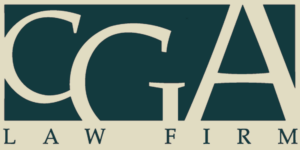
IMPACT ON IRAS, 401(K)S AND 529 SAVINGS ACCOUNTS
On December 20, 2019 Congress passed a comprehensive governmental spending package, which included provisions creating the Setting Every Community Up for Retirement Enhancement (SECURE) Act. Congress’s intent with the legislation was to initiate long
- Age for required minimum distributions (RMDs) raised to 72. Americans will no longer be required to withdraw assets from IRAs and 401(k)s at age 70 ½. RMDs will now be required starting at age 72 for individuals that turn 70 ½ as of 2020.
- Maximum age for IRA contributions raised to 72. Americans will no longer be required to cease making IRA contributions beyond 70 1/2. As per the SECURE Act, contributions to a traditional IRA can now be made until age 72 as long as you are still working.
- Stretch IRAs now limited to a 10 year distribution period. Prior to the SECURE Act, with an inherited IRA or 401(k), it was easy to “stretch” your distribution and the corresponding tax liability over a beneficiary’s life expectancy. After the passage of the SECURE Act, IRAs and 401(k)s inherited from original owners who have passed away on or after January 1, 2020 require many beneficiaries to withdraw such inherited IRA or 401(k) assets within 10 years following the death of the original account owner. Exceptions to the 10 year distribution rule include assets such as 401(k)s and IRAs left to a surviving spouse, a child under the age of 18, and in some instances disabled or terminally ill beneficiaries.
- 401(k) plans must be made available to long term, part time workers. Prior to the passage of the SECURE Act, if an employee worked less than 1000 hours per year, they were typically not able to participate in their company’s 401(k) Plan. After the passage of the SECURE Act, employers that maintain a 401(k) Plan are also required to allow for participation to all employees who have worked more than 1000 hours in a year or 500 hours per year over three consecutive years.
- Tax credits for small business owners starting a retirement plan. The SECURE Act creates a startup for retirement plan credit for small businesses equal to $250 per non-highly compensated employee eligible to enroll in such an employer based retirement plan. The maximum credits that can be earned cannot exceed $5,000. For purposes of the Act, small employers are defined as having up to 100 employees over a three year period beginning January 1, 2020. Lastly, if the retirement plan includes an automatic enrollment feature, $500 worth of additional credits can be obtained.
- Revisions to permissible withdraws from 401(k) plans and IRAs. The SECURE Act permits withdraws of up to $5,000 per parent penalty free from a 401(k) or IRA Plan as a result of a child being born or adopted.
- Up to $10,000 worth of 529 savings accounts funds can be used to pay for existing student loans. If families have leftover funds in their section 529 savings plans after their beneficiaries graduate, up to $10,000 worth of those funds may be utilized to pay down existing student loans during that students’ life time.
The aforementioned provisions of the SECURE Act represent a few of the most pertinent changes affecting IRA plans, 401(k) Plans and Section 529 savings accounts. To learn more about the SECURE Act and its effects on retirement savings contact a CGA Law attorney.
By Frank H. Countess, Esquire
Shareholder and Estate Planning & Administration Attorney at CGA Law Firm
CGA’s latest blog posts.
Christine Bland Celebrates 20 Years with CGA
CGA Law Firm recognizes Paralegal Christine Bland for her remarkable 20 years of service. She embarked on her journey at CGA as a municipal paralegal, a role tailored to support the firm’s expanding municipal practice group. “Chris has been a true asset to CGA and our municipal law department. She is smart, hard-working, and always…
Continue Reading Christine Bland Celebrates 20 Years with CGA
POA – The Centerpiece of the Estate Plan
From Attorney Tim Bupp, chair of the CGA Law Firm Estate Law practice group. In this biweekly column, Attorney Tim Bupp shares with you lessons and perspectives from his twenty-five years as an estate planner with CGA Law Firm. Everyone has heard of a Last Will and Testament and knows that a Will is an…

